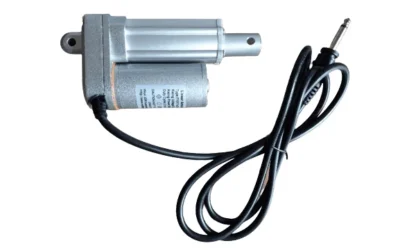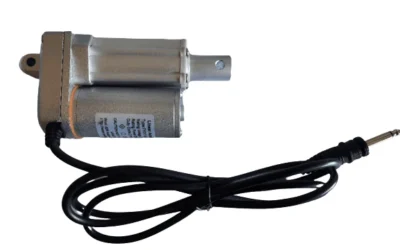BlogS
Linear Actuator Door Opener: Revolutionizing Automation
Linear actuators are pivotal components in various industries, from automotive to healthcare, enabling precise linear motion and control. One of the innovative applications of linear actuators is in automated door opening systems. This blog delves into the...
Electric Actuator in Curtain and Blinds Movements in Windows
Imagine waking up to the gentle caress of sunlight filtering through your bedroom windows, with your curtains opening automatically to let in the day. Sounds like something out of a sci-fi movie, right? But with modern technology, specifically electric actuator, this...
Electric vs Electro Hydraulic Actuators – A Comprehensive Guide
Electro hydraulic actuators, often simply referred to as electric actuators, have revolutionized various industries with their precision, efficiency, and reliability. In this comprehensive guide, we will explore the basics and applications of electric actuators, with...
Linear Actuator Wiring, Working and Applications
Linear actuators play a crucial role in converting electrical energy into linear motion, enabling the push and pull movements needed in various applications. Understanding how to wire a linear actuator is essential for integrating it into your system effectively. This...
Electric Actuator in the Kitchen and Wardrobe Automation
In today's fast-paced world, automation has seeped into various aspects of our daily lives, enhancing convenience and efficiency. One of the remarkable advancements in this realm is the application of electric actuator for kitchen and wardrobe automation. These...
Electric Pneumatic Actuators – Principles & Applications
Alright, folks, let’s dive into the fascinating world of electric pneumatic actuators. Imagine the unsung heroes of the automation world, tirelessly working behind the scenes, making things move, lift, push, and pull—all with the precision of a Swiss watch. These...
Frequently Asked Questions(FAQ)
What is a linear actuator?
A linear actuator is a device that converts rotational motion into linear motion. It is used to move objects in a straight line
What are the benefits of using a linear actuator?
The benefits of using a linear actuator include precise and controlled linear motion, compact size, easy installation, and efficiency.
How do I install and maintain my linear actuator?
The installation and maintenance of a linear actuator will depend on the specific model and type. Refer to the manufacturer’s instructions for installation and maintenance guidelines.
What safety precautions should I take when working with linear actuators?
Always follow the manufacturer’s instructions and safety guidelines when working with linear actuators. Ensure that the actuator is properly secured and that the power source is disconnected before working on the actuator.
What is the difference between a linear actuator and a rotary actuator?
A linear actuator moves in a straight line, while a rotary actuator rotates around an axis. Linear actuators are used when linear motion is required, whereas rotary actuators are used when rotational motion is needed.
What is the difference between an electric linear actuator and a hydraulic linear actuator?
An electric linear actuator uses electrical energy to create linear motion, while a hydraulic linear actuator uses pressurized hydraulic fluid to create linear motion. Electric linear actuators are typically easier to install and maintain, while hydraulic linear actuators can generate higher force.
Can a linear actuator be used for precise positioning?
Yes, linear actuators are often used for precise positioning due to their ability to provide accurate and repeatable linear motion.
How do I determine the stroke length of a linear actuator?
The stroke length of a linear actuator is the distance the actuator can travel in a straight line. To determine the required stroke length, consider the distance the actuator needs to move to complete its intended task.
What are some common materials used to make linear actuators?
Linear actuators can be made from a variety of materials, including aluminum, stainless steel, plastic, and carbon fiber. The choice of material will depend on the specific application and environmental conditions.
Can a linear actuator be used in hazardous environments?
Yes, some linear actuators are designed for use in hazardous environments and are made from materials that can withstand exposure to extreme temperatures, chemicals, or other hazardous conditions.
Can a linear actuator be customized to fit my specific application?
Yes, many manufacturers offer customized linear actuators to fit specific applications. These can include modifications to stroke length, force, speed, mounting options, and environmental protection.






